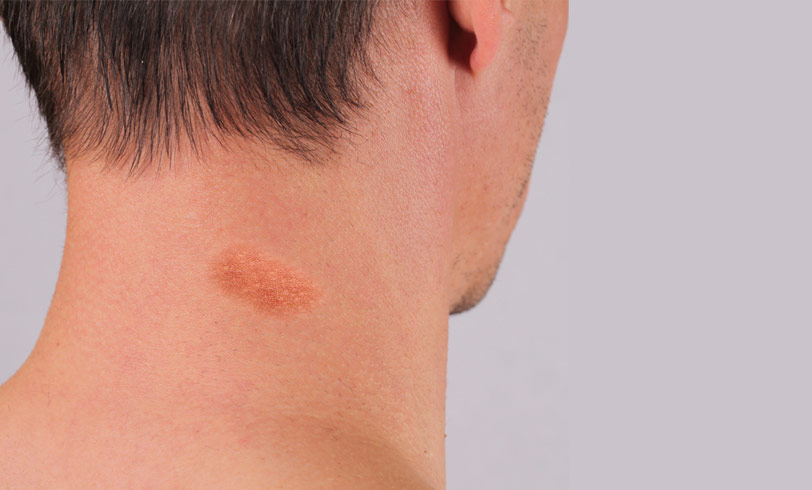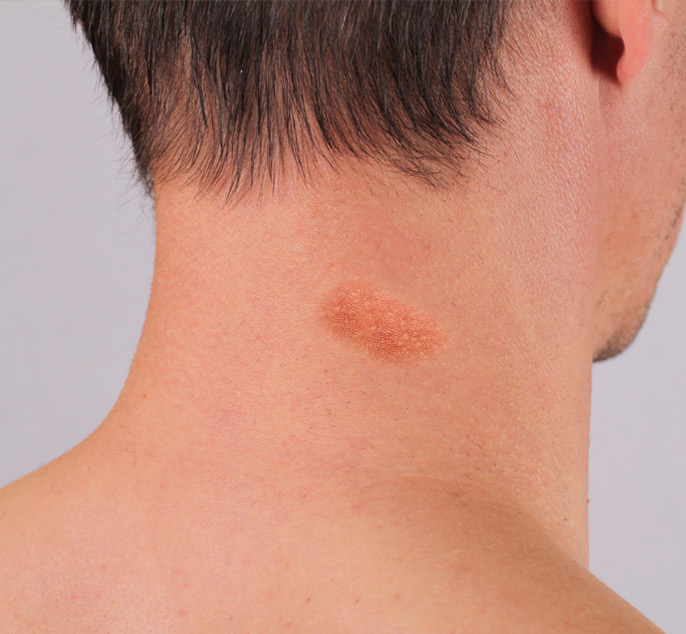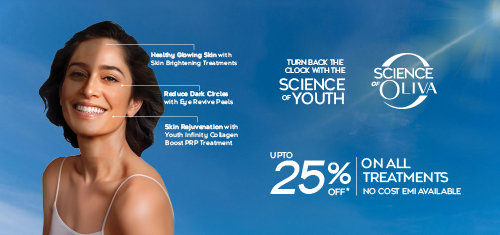

Birth Marks
Causes, Types And ManagementBirthmarks, also called beauty marks, affect both men and women. They occur due to malformation or proliferation of pigment cells or capillaries during foetal development. Birthmarks are inherited or acquired and vary in type, size and location.
What Are Birthmarks?
Birthmarks are the areas of discoloured skin with or without alteration in skin texture formed due to an error in the organisation of skin cells or blood vessels during the time of fetal development.
Birthmarks can appear on any area of the body. Some of them appear above the skin surface, while some form under the skin. Birthmarks occur and are usually apparent at birth or in early childhood (first five years of life). In a few cases, small-sized marks may not be noticeable at birth until they grow more prominent at a later age.
Causes of Birthmarks
Medical science has not explained the reasons for birthmark formation entirely yet. Most occur by chance alone and are not associated with other underlying medical problems. Some birthmark types can occur as part of a larger group of medical conditions called a syndrome.
-
Vascular birthmarks
Improper formation of blood vessels/capillaries.
-
Pigmented birthmarks
Abnormal persistence or proliferation of pigment cells
Symptoms & Types
You can classify birthmarks into vascular (derived from blood vessels) or pigmented (derived from pigment cells, i.e. melanocytes that control skin colour by the production of a pigment called melanin).
Naevus flammeus (Port Wine Stains)
The medical term for port wine stains (PWS) is naevus flammeus. Most PWS or firemarks affect the face but may involve any area of the skin. They begin as flat, faint red or purple-pink mark at birth. It often turns dark red or purple in adults, and the overlying skin becomes thicker than the surrounding one. Lumps can form, which may bleed readily. Lips or nose if involved may appear swollen. It does not go away on its own. Approximately three in every 1,000 babies (0.3%) have a port wine stain at birth.
Macular stains – Stork bites or angel’s kiss
Medically referred to as Nevus Simplex, is a flat, pink, irregular shaped The macular stain or salmon patch is termed as “angel’s kiss” when they appear on the front (forehead, bridge of the nose, eyelids, upper lip), and “stork bites” when they occur on the back (nape of the neck). The prevalence varies from 20-60 %. Majority of the macular stains resolve spontaneously on their own within the first year of age.
Hemangiomas
Hemangiomas are lumpy, reddish-pink bulges on the skin. Some are superficial and appear on the surface of the skin (“strawberry marks”), while others form deeper under the skin surface. More than 50 % affect the head and neck. Usually, they involute with age (90% by nine years). The anatomical location determines the risk of complications, and they may be associated with specific syndromes.
Dermal melanocytoses
Dermal melanocytoses are flat, bluish-grey areas of skin thatlook like bruises. Depending on the area of the body on which they appear, dermatologists may classify them as Mongolian spots, Nevus of Ota or Nevus of Ito. They occur due to abnormal persistence of pigment cells or melanocytes in the deeper layers of skin.
Congenital melanocytic nevi
Congenital melanocytic nevi (CMN) are flat or raised birthmarks thatrange from light brown to black and can be of variable shapes and sizes (less than 1.5cm to more than 20 cm). Some nevi even have hair growing out of them. 1 in 100 people (1%) has one or more CMN at birth. Usually, they become paler in the first or second year of age, but in a few cases, they may indicate specific syndromes.
Café-au-lait spots
Cafe-au-lait macules (CALM) are tan or light brown flat spots that are usually oval. Their incidence varies with race (0.3%-18%). Six or more such spots may be a sign of neurofibromatosis.
Diagnosis
Untreated acne may become severe, cause permanent collagen damage and leave behind visible scars on the skin.
Physical examination by a dermatologist.
Use of dermascope if needed.
Imaging tests (Ultrasound, CT scan, MRI) or skin biopsy for deeper marks.
Are you at Risk?
-
Most birthmarks are harmless.
-
Some may impede healthy development or body functioning.
-
Rare cases of transformation into cancer (e.g., melanocytic nevi).
Prevention and Management
Note Changes
Monitor changes in colour, size, or texture of birthmarks.
Seek Medical Help In Case Of Anomalies
Consult a dermatologist for pain, bleeding, itching, or inflammation.
Treatment Options
Prognosis
- Visible improvements in skin texture and tone.
- Reduction of fine lines, wrinkles, and pigmentation.
- Achieve youthful, rejuvenated skin with minimal downtime.
- Follow-up sessions may be necessary.


